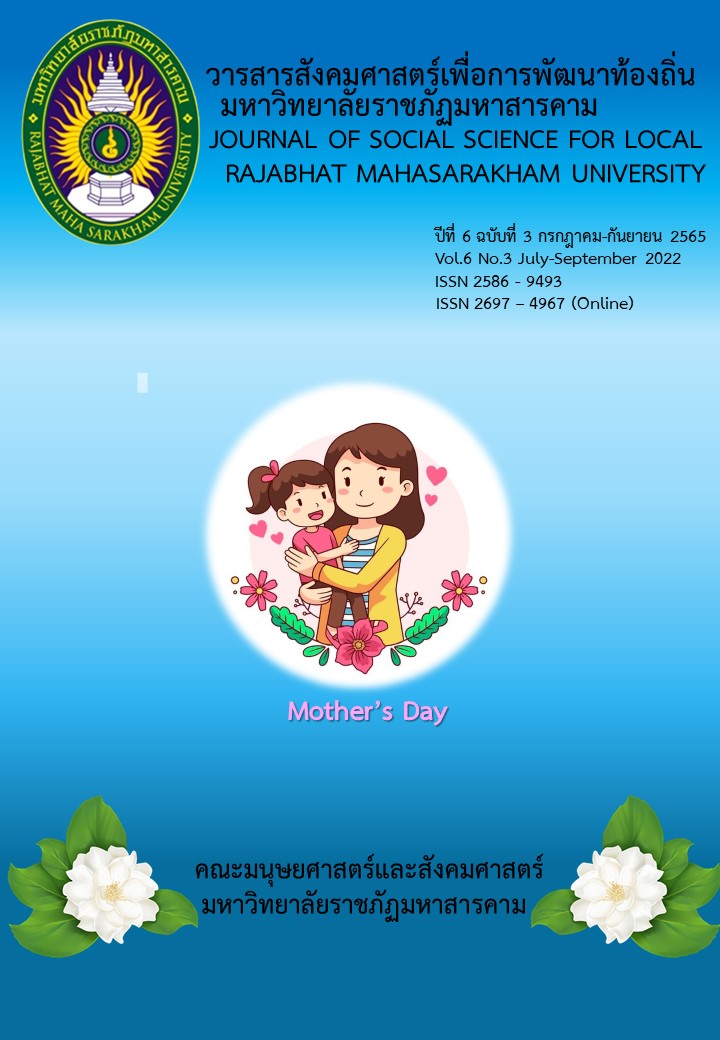Study the Process of Weaving Silk in Folk Handicrafts: A case study of Ban Lad Burapha Si Suk Sub-district Kantharawichai District Maha Sarakham Province to the Creation of Works in Contemporary Isan Folk Dances the Phusa Burapha Art Set.
Keywords:
Creative, Folk Dance, Contemporary, Garment ArtAbstract
The objectives of this research are 1. to study the process of weaving silk. Ban Lad Burapha Community, Si Suk Subdistrict, Kantharawichai District Maha Sarakham Province and 2. To create works of contemporary Isan folk dance, the Phusa Burapha Art Set This is qualitative research. There is a research tool, namely an interview form, with the research target 2 people who came from a specific selection. The data collected from the data collected from documents, literature, and interview forms were used for content analysis. The results of the research showed that 1) the silk weaving process of Ban Lad Burapha community is a long-standing local wisdom. The most popular weave patterns are common patterns. and vegetable pattern Phak Tio flower pattern is a pattern inspired by nature, applied to the traditional pattern that exists. 2) The creation of contemporary Isan folk dance works, the Phusa Burapha Art Set. There are performance elements: (1) the lyrics and melodies are a mix of choral performances with contemporary music; (2) the instruments used in the performance are folk instruments combined with international instruments. (3) costumes using silk cloth with Phak Tio patterns to be applied in a modern way. (4) Stage used for performances. (5) 12 female performers.


